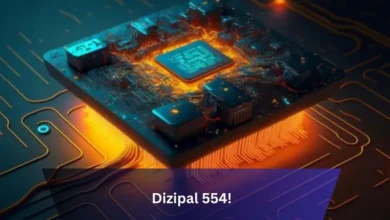Hyperfiksaatio: Understanding Hyperfixation, Its Causes, and How to Manage It

The Finnish word “hyperfiksaatio” translates to hyperfixation in English. It refers to a state of intense, long-lasting focus on a specific topic, activity, or interest. Unlike a regular hobby or passion, hyperfiksaatio can take over a person’s thoughts and time to the point where daily tasks, sleep, or even meals are forgotten.
While some people see hyperfiksaatio as a distraction or problem, others experience it as a superpower that allows them to learn deeply, create, or achieve outstanding results. In this article, we’ll break down what hyperfiksaatio means, why it happens, how it differs from hyperfocus, its effects on daily life, and strategies to manage it effectively.
What Is Hyperfiksaatio?
Hyperfiksaatio is an intense immersion in one subject or activity for an extended period of time. A person experiencing it may lose track of hours or even days while being completely absorbed.
-
It is different from normal interest because hyperfiksaatio often blocks out other responsibilities or needs.
-
People can hyperfixate on a hobby, game, TV show, research topic, project, or even a person.
-
Often, individuals in this state don’t realize how much time has passed or how much they’ve ignored around them.
While anyone can experience hyperfiksaatio, it is especially common in people with ADHD and autism spectrum disorders (ASD).
Causes and Triggers of Hyperfiksaatio
Why does hyperfiksaatio happen? Researchers suggest a mix of neurological, emotional, and environmental factors play a role.
1. Neurodivergence (ADHD, Autism, and More)
-
People with ADHD often experience hyperfiksaatio due to differences in dopamine regulation.
-
Those on the autism spectrum may develop special interests that become hyperfiksaatio.
-
In both cases, the brain’s reward system gets “stuck” on one area of stimulation, making it hard to shift focus.
2. Emotional Regulation & Stress
Hyperfiksaatio can act as a coping mechanism during stress, anxiety, or overwhelm. By diving into one absorbing activity, the brain finds a way to escape chaos and regain control.
3. The Brain’s Reward Pathways
Dopamine, the “feel-good” chemical, plays a major role. Activities that provide high stimulation — gaming, research, art, or binge-watching — can create a cycle where the brain keeps seeking the same reward, fueling hyperfiksaatio.
4. Environmental and Personal Triggers
-
A stressful environment may push someone toward hyperfiksaatio as a safe “refuge.”
-
Past experiences of success or joy in a subject can also trigger deep fixation later.
In short: hyperfiksaatio is not random — it’s influenced by both the brain’s chemistry and the context around a person.
Hyperfiksaatio vs. Hyperfocus: Key Differences
Many people confuse hyperfiksaatio with hyperfocus, but they’re not the same. Both involve intense concentration, yet they differ in duration, purpose, and control.
🔍 Similarities
-
Deep immersion and loss of time awareness.
-
Reduced ability to respond to outside stimuli.
-
Strong productivity if aligned with a meaningful task.
⚖️ Differences
| Aspect | Hyperfiksaatio | Hyperfocus |
|---|---|---|
| Duration | Can last days, weeks, or longer | Usually hours or part of a day |
| Focus | Broad area of interest (hobby, show, theme) | Specific task or project |
| Control | Harder to stop or redirect | Can sometimes be managed |
| Impact | May disrupt daily routines and responsibilities | Often leads to productivity |
In short, hyperfiksaatio is broader and harder to control, while hyperfocus is usually tied to immediate tasks and goals.
How Hyperfiksaatio Appears in Daily Life
Hyperfiksaatio shows up in everyday routines in both helpful and challenging ways.
🧠 Common Signs of Hyperfiksaatio
-
Losing track of time while engaged in one thing.
-
Neglecting responsibilities like housework, school, or deadlines.
-
Ignoring physical needs such as eating, sleeping, or exercising.
-
Social withdrawal, where friendships and family interactions are replaced with fixation.
-
Difficulty stopping, even when the person wants to switch tasks.
⚖️ Positive Effects
-
Deep learning and mastery in a subject area.
-
Flow state and productivity when working on creative or work-related projects.
-
Stress relief, providing comfort and escape during hard times.
-
Innovation and creativity, since immersion can lead to unique ideas.
❌ Negative Effects
-
Imbalance in daily life, including skipped meals, poor sleep, or reduced self-care.
-
Burnout or exhaustion after long periods of fixation.
-
Guilt and shame from ignoring responsibilities.
-
Strain in relationships when others feel neglected.
For many, hyperfiksaatio feels like a double-edged sword — it brings passion and expertise but can also cause disruption if left unmanaged.
Managing Hyperfiksaatio: Practical Strategies
While hyperfiksaatio cannot (and should not) always be eliminated, it can be managed and balanced. Here are proven strategies:
1. Time Management Tools
-
Use timers and alarms to remind you to take breaks.
-
Schedule dedicated “fixation time” and balance it with responsibilities.
-
Divide your day into blocks to create structure.
2. Diversify Interests
-
Cultivate multiple hobbies so one fixation doesn’t dominate your life.
-
Rotate between them to create balance.
3. Combine Fixation with Responsibilities
-
Link obligations to your hyperfiksaatio. Example: if you hyperfixate on a TV show, fold laundry while watching.
-
Create task lists that mix fun with necessary duties.
4. Take Care of Physical Needs
-
Schedule meals, sleep, and exercise to avoid burnout.
-
Practice self-care routines that keep your body in balance.
5. Mindfulness & Self-Awareness
-
Practice asking yourself: “How long have I been doing this?”
-
Journal about your hyperfiksaatio patterns to gain awareness.
6. Transition Strategies
-
Use micro-breaks (1–2 minutes) to reset your brain.
-
Change your environment (move rooms, step outside, drink water).
7. Seek Professional Support
-
If hyperfiksaatio disrupts daily life, therapy or ADHD coaching can help.
-
Professionals can provide customized coping strategies.
The goal isn’t to “cure” hyperfiksaatio but to channel it productively while maintaining balance.
Conclusion
Hyperfiksaatio is more than just deep interest — it is a powerful psychological state of complete immersion. It’s influenced by neurodivergence, dopamine, stress, and environment, and while it can bring expertise, creativity, and productivity, it can also cause neglect of responsibilities, exhaustion, and strained relationships.
By learning to manage hyperfiksaatio through time management, balance, mindfulness, and professional support, people can embrace it as a strength rather than a struggle.
If you’ve ever felt “stuck” in a cycle of hyperfiksaatio, remember: it’s not about eliminating it — it’s about learning to harness its power without losing control.




